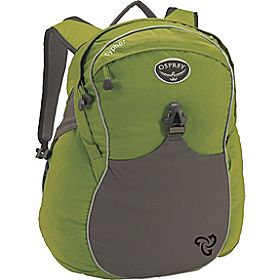
 |
|
|
|
Celebrate Green!� feature, August 2010
Welcome to Celebrate Green's feature idea for August We�re happy to present the following material for you to use in whole or in part in newspaper, magazine or blog articles or on radio or TV. Just a few guidelines: 1. If you use a portion of the article, include a link to www.CelebrateGreen.net somewhere in the body or at the end. 2. If you use the entire article, include the following at the end: Lynn Colwell and Corey Colwell-Lipson are mother and daughter and co-authors of Celebrate Green! Creating Eco-Savvy Holidays, Celebrations and Traditions for the Whole Family, available at www.CelebrateGreen.net 3. If you need more information, would like to interview us about an upcoming holiday or celebration, or would like to ask about custom material, please contact us or call 425-793-3590 (Pacific time). 4. If you have any suggestions for how to make this material more useful or have an aspect of a particular holiday or celebration you'd like us to write about, email us. Thank you and enjoy! Lynn and Corey Celebrate back-to-school with better-for-the-planet choices that can save money too The new school year is just around the corner and that means shopping. Kids not only want/need new clothes, but want/need to be re-supplied with everything from backpacks to lunchboxes, paper, pencils and, depending on age, electronics. And while living an eco-friendlier lifestyle means buying less (and spending less), it also means buying smarter if you're going to purchase. Here are some tips for making better-for-the-Earth choices when it comes to schools supplies. 1. Before setting foot in the store or clicking on your favorite store's website, make a list of every item your kids need/want. 2. Next, have your children go on a hunt through the house for items on the list. (Checking with grandparents, neighbors and friends is encouraged.) If you�re like most families, you�ve already got dozens of pens, highlighters, notebooks and other sundry items that you don�t need to buy. Set a timer for 10 or 15 minutes and if you like, reward the family member who comes up with the most usable items. 3. Discuss with children who are old enough, why it�s important to use what you have and avoid spending money and creating more waste. Perhaps you can come up with a challenge. Ask your kids to keep track of expenditures. If they can get everything for an amount you set, the family does something they enjoy together as a treat. 4. Set up a swap. This is a great way to save money as well as recycle not only clothing, but all sorts of school necessities. If parents are enthusiastic, most kids will be perfectly happy with new-to-them items! 5. 6. When buying new, seek out eco-friendlier alternatives. Even big box stores are carrying 100 percent recycled paper, recycled binders and notebooks, but you might need to seek them out. And if your local store doesn�t have these goodies, be part of the solution by asking the manager if she would consider ordering some. Have favorite brands you usually buy online? Pass on the names to the manager. 7. Buying online makes choosing eco very easy. Do a search for an eco-friendlier option for any school supply. Here are just a few examples of what you�ll find: Ecojot, carries awesome recycled journals and notebooks. ReBinder has 3-ring binders, Recyled Products offers lots of recycled pen and pencil choices, and backpacks made from recycled soda bottles can be found at many sites. 8. Get those coupons! Many people believe that eco=expensive. Sure, that can be true. But the fact is, coupons and deals abound. Google the name of the product or store plus the word "coupon" or "deal." Shopping in a locally-owned store? Contact your friends and get their lists, then ask the manager if you can get a discount for buying in bulk. 9. Buy only what you need. Those 12 for-the-price-of-6 notebooks are not a bargain if your kids never use them. 10. On the other hand, buying in bulk can save on packaging, so if you can buy a bunch for less, then split among friends, you�ll not only save money, but help the Earth as well. 11. If purchasing new, according to the Center for Health, Environment and Justice, you will want to:
And when the gathering/swapping and/or buying is done, have some fun. Celebrate this year's eco-friendlier (and money-saving) choices with a family fashion show/demo or an old-fashioned ice cream social. If you wish to unsubscribe from this mailing list, please click here. |
